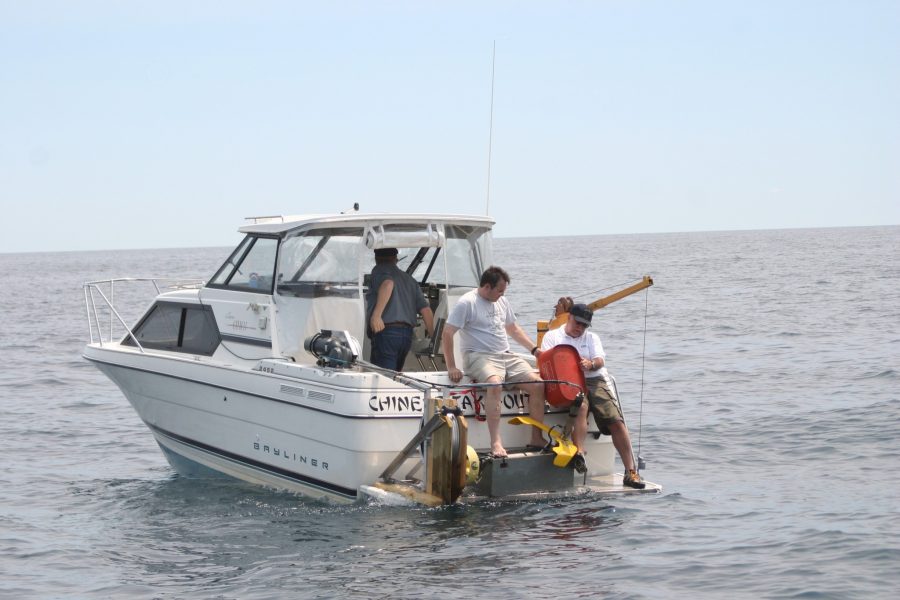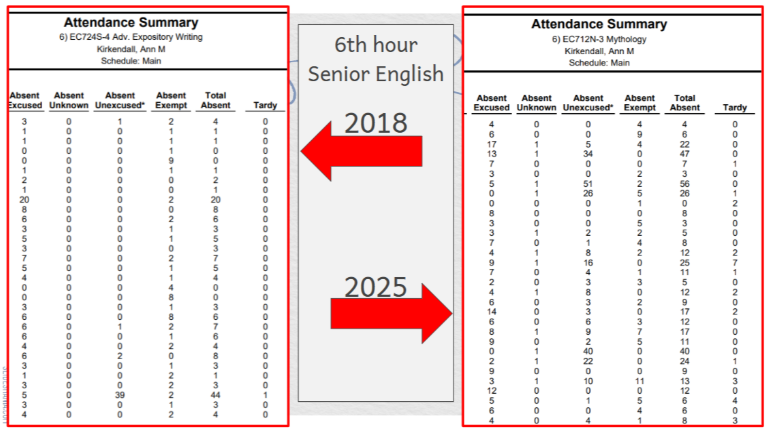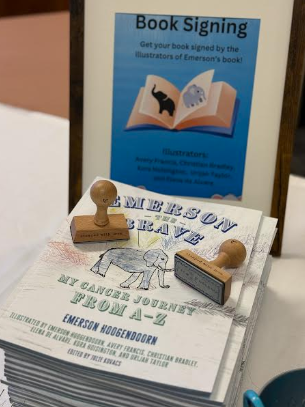Running solely on caffeine and hope, his body is one with the steady rocking of the boat and the lull of the waves. A cool night breeze helps to keep him awake. Pitch darkness. He is a robot. Steering the boat in a straight path until he has to turn into the next invisible lane on the lake. The ultimate video game. He struggles to keep the boat’s path straight so that it matches on the GPS. Countless hours on the lake have exhausted him so that the world consists of only crew members, water, and flies. The pestering flies no longer have an effect on him. He takes another sip from his 20th cup of coffee and scans the Humminbird screen which shows him images of the lake’s floor. Suddenly, a dark blob on the screen catches his eye. The blob is not just any blob. It’s a shipwreck.
Every spring, the Michigan Shipwreck Research Association (MSRA), a non-profit organization located in Holland, Michigan, scans the Lake Michigan floor for sunken ships in order to solve the mystery of their sinkings. Valerie VanHeest, Jack VanHeest, and Craig Rich founded MSRA in 1998. The group’s mission is to “research, explore, document, and interpret Michigan submerged maritime history,” Valerie VanHeest said. “We combine our passion for solving maritime mysteries with our interest for sharing these stories with the public.”
There are more than 6,000 shipwrecks lying in the depths of Lake Michigan due to the harsh, unpredictable weather on the lake. MSRA has found twenty shipwrecks, including the H.C. Akeley, the Hennepin, the John V. Moran, and the Michigan.
MSRA performs about two to three weeks of searching each spring, sending out a crew of at least four people on its boat. To find the shipwrecks, crew members tow a torpedo-looking device called a side-scan sonar, which operates similar to echolocation, off the stern of the boat in the water. The sonar sends out waves which hit the lake bottom and rebound to immediately show the shadows of the lake floor on the screen of a device called a Humminbird Side Scan. If the scan shows a large shadow, it could be a possible shipwreck; however, more often than not, it’s ordinary debris or geological formations. “It’s pretty easy to differentiate between what’s rock and what’s a shipwreck,” Jack VanHeest said. “The shadows are quite detailed. They either look like something manmade or something natural on the side-scan.”
So how does MSRA know where to scan the lake bottom? Through extensive research on the ship’s location and the lake’s wave patterns, MSRA members can specify a general plot of water where the shipwreck may be. The crew puts the coordinates of the plot of water in a GPS, and runs lanes on the lake. “It’s like mowing the lawn,” Jack VanHeest said. “We run the boat back and forth along the plot of water while towing the side-scan sonar until we have covered the whole area.”
If the team finds a potential target, they save the coordinates for further investigation. MSRA returns to the wreck with scuba diving gear, and divers to determine if the shadow is a shipwreck. The scuba divers use self contained breathing apparatuses (SCUBA) tanks which allow them to stay underwater for a given period. The divers can take videos and notes while exploring a wreck. They try to identify and document the ship, and after the dive, conduct more research on the shipwreck.
“Some people have a misconception that finding a shipwreck is easy,” Rich said. “People don’t realize the amount of time, money, and effort is put into the process. It can take years to find one wreck.”
“Searching is all weather dependent,” Valerie VanHeest said. MSRA cannot search if the waves are too rough. “If there’s rain the day before, the sidescan sonar cannot get a clear read on the floor bottom because all the sediment is worked up.” Because the process of searching is centered around the weather, MSRA takes advantage when conditions are optimal.
“We have had periods where we are on the boat searching for days straight with few hours of sleep,” Jack VanHeest said. “We really become scruffy sailors.” MSRA searches in spring when the water is cold because the sonar can penetrate best in lower temperatures.
MSRA members are a dedicated bunch. Taya VanHeest, the youngest daughter of the VanHeest family describes what it’s like to live with shipwreck enthusiasts. “The basement is full of scuba gear and boat equipment. When my parents aren’t working their other careers, they are pouring all their energy into the shipwrecks. It becomes so stressful in the spring. There’s so much pressure on my parents to get the searching instruments ready while the weather is still OK for searching.”
“Shipwrecks are a huge part of our lives,” Jack VanHeest said. “In fact, I met Val (VanHeest) at a convention that was about shipwrecks and scuba diving.”
“For me, it started as a hobby and turned into a career,” Valerie VanHeest said. “I write books, design museum exhibits, and lecture on MSRA’s work.”
In June this year, MSRA will be searching for Northwest Airlines Flight 2501, a DC4 plane that crashed in Lake Michigan in 1950. This will be its 16th year searching for Flight 2501. “I strongly believe this will be the year we finally find wreck on the lake floor,” Valerie VanHeest said.
Solving the mystery of the plane and giving closure to the families of the victims of the wreck has been one of MSRA’s greatest projects. Valerie VanHeest wrote the book Fatal Crossing, explaining the story of Flight 2501 and the research MSRA has dedicated to the plane. She found two mass graves of the victims’ remains in cemeteries in Benton Harbor and South Haven and has held services for the family members of the victims. “That’s really what it’s all about,” Valerie VanHeest says. “When we first set out to find century-old shipwrecks, we didn’t realize how greatly we could impact people today. The quest became all the more important when we met families of the plane victims.“
With each wreck and story discovered in Lake Michigan, MSRA provides closure to the many people who are associated with these tragedies. MSRA is continuing on its quest for answers. “To be the first people to see something lost for over a century is very exciting. Studying the remains of a shipwreck is akin to a crime scene which helps to solve the mystery,” Valerie VanHeest said.
For the VanHeest family, a world revolving around shipwrecks is part of everyday life. MSRA’s mission and accomplishments have greatly increased the understanding of Lake Michigan’s maritime history and have solved its underwater mysteries.







